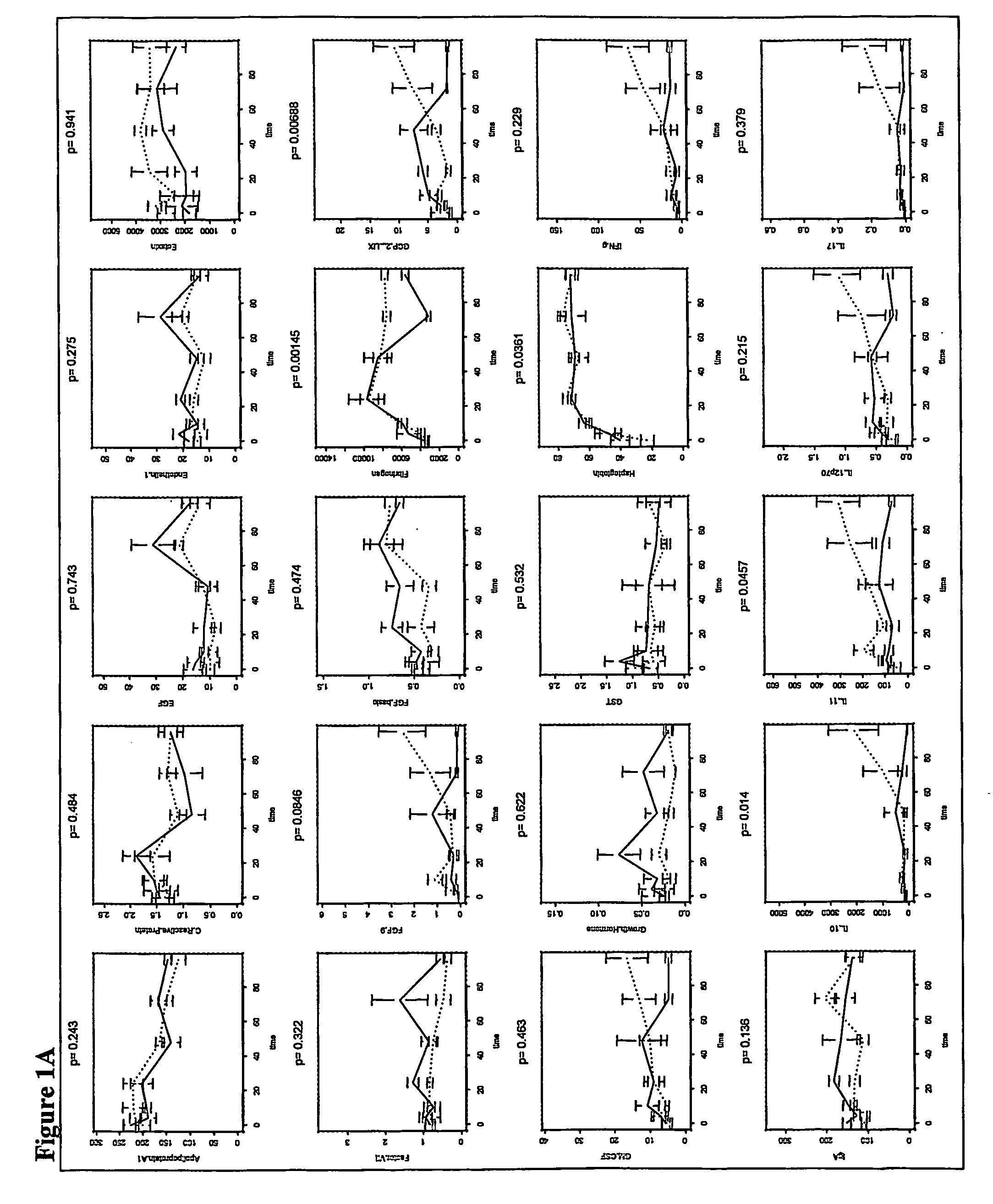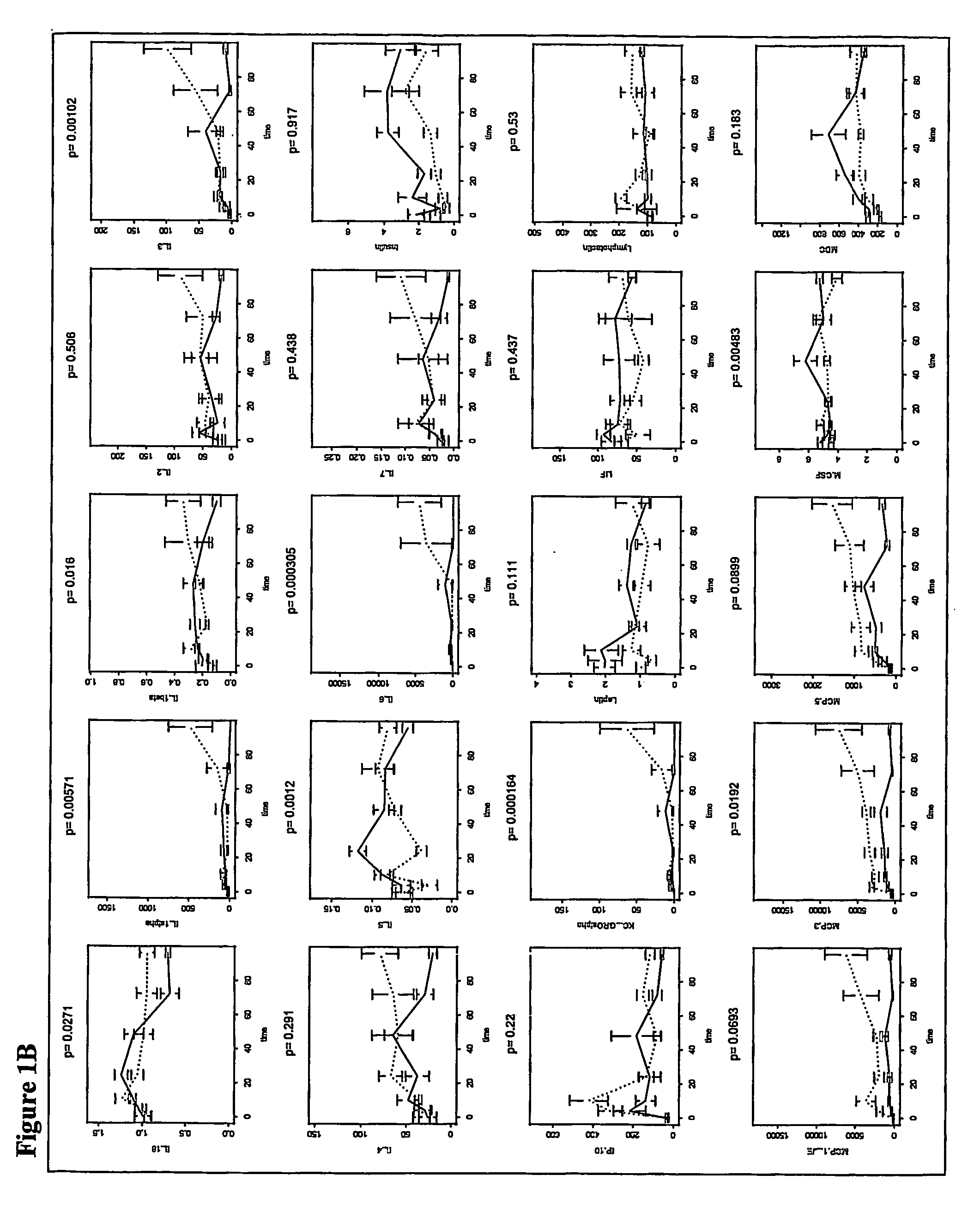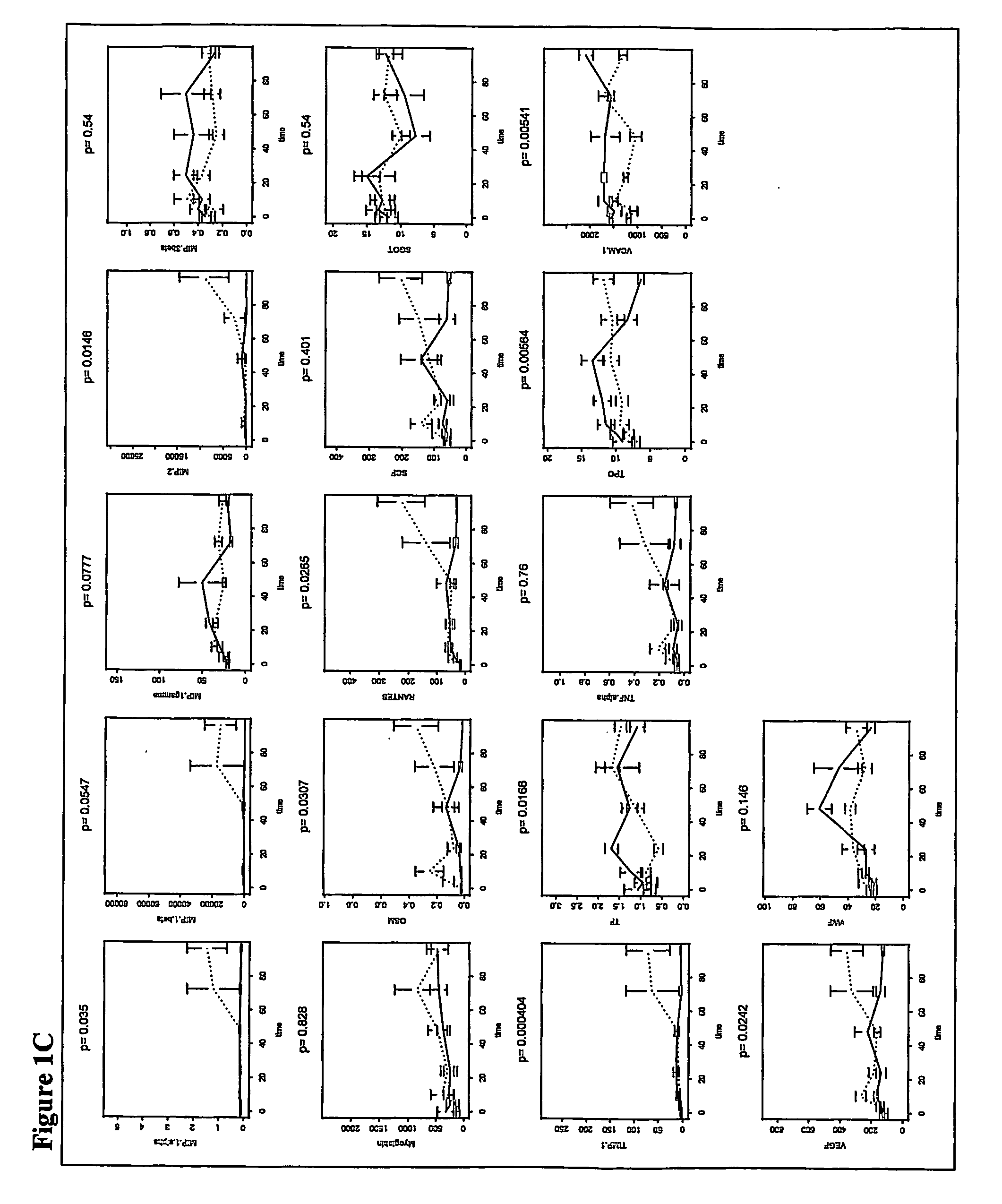Modeling of systemic inflammatory response to infection
a systemic inflammatory response and model technology, applied in the field of model of the systemic inflammatory response to infection, can solve the problems of insufficient treatment options, limited search for new effective treatments for sepsis, and death of hospitalized patients
- Summary
- Abstract
- Description
- Claims
- Application Information
AI Technical Summary
Problems solved by technology
Method used
Image
Examples
example 1
Infectious Immunocompromised Mouse Model
[0122] Initially, C3H / HeJ mice were compared with C3H / HeN normal mice in a pouch model for their ability to survive infection. Mice of strain C3H / HeJ are defective in the TLR4 receptor and do not undergo LPS-induced shock. The mice were anesthetized with isofluorane, shaved in the area caudal to the ears, and a pouch was created by subcutaneous injection of 2-3 ml of air followed by the subcutaneous injection of 0.2 ml of a 0.5% solution of croton oil in olive oil. Either four days (d4) or five days (d5) later, animals were checked for the presence of a pouch. The number of animals observed to have pouches at these times are shown in Table 1 below, under the columns “d4” and “d5.” Animals without pouches were discarded. E. coli bort was injected in the pouches as reported in the first column of Table 1.
[0123] All animals of the HeJ strain were euthanized due to terminal health conditions, starting at 18.5 h and lasting until 48 h post-inject...
example 2
Identification of a Biomarker Panel in an Immunocompromised Mouse Model at 22 Hours Post-Infection
[0133] In an experiment using mice immunocompromised as described above, 22 mice were tested. Of these animals, 8 were doomed and 8 survived. As described in the survival study in Example 1, blood samples were taken from mice at 22 hours after infection. These samples were analyzed and used to derive a model to predict the outcome, i.e., survived or doomed, for animals that were both irradiated and infected with bacteria.
[0134] The 59 analytes measured in the samples were Apolipoprotein A1, β2 Microglobulin, C Reactive Protein, D-dimer, EGF, Endothelin-1, Eotaxin, Factor VII, FGF-9, FGF-Basic, Fibrinogen, GCP-2, LIX, GM-CSF, Growth Hormone, GST, Haptoglobin, IFN-α, IgA, IL-10, IL-11, IL-12p70, IL-17, IL-18, IL-1α, IL-1β, IL-2, IL-3, IL-4, IL-5, IL-6, IL-7, Insulin, IP-10, KC-GRO, Leptin, LIF, Lymphotactin, MCP-1-JE, MCP-3, MCP-5, M-CSF, MDC, MIP-1α, MIP-1β, MIP-1α, MIP-2, MIP-3β, Myog...
example 3
Use of Biomarker Panel Identified in Immunocompromised Mouse Model to Predict Disease Outcome-I
[0140] The discrimination function derived as described in Example 2 was applied to a set of mice. The discrimination model correctly predicted 100% doomed and 100% survived animals.
PUM
| Property | Measurement | Unit |
|---|---|---|
| body temperature | aaaaa | aaaaa |
| body temperature | aaaaa | aaaaa |
| temperature | aaaaa | aaaaa |
Abstract
Description
Claims
Application Information
 Login to View More
Login to View More - R&D
- Intellectual Property
- Life Sciences
- Materials
- Tech Scout
- Unparalleled Data Quality
- Higher Quality Content
- 60% Fewer Hallucinations
Browse by: Latest US Patents, China's latest patents, Technical Efficacy Thesaurus, Application Domain, Technology Topic, Popular Technical Reports.
© 2025 PatSnap. All rights reserved.Legal|Privacy policy|Modern Slavery Act Transparency Statement|Sitemap|About US| Contact US: help@patsnap.com



